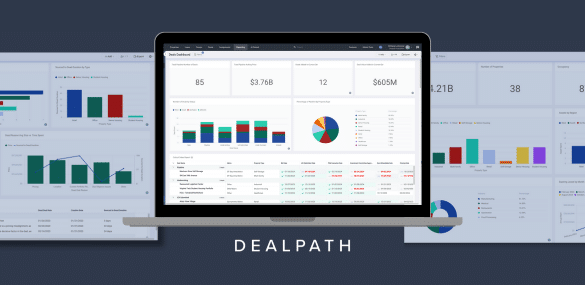To effectively gauge the potential return on an investment property, understanding its value is a crucial first step. There are several different approaches that appraisers follow to value commercial real estate properties, and cost approach appraisal is among the most popular. Unlike other methods, the cost approach assigns a value based on the costs an investor might incur recreating the same building from scratch.
In this blog post, we’ll review what the cost approach to appraisal is, how to calculate the value using the cost approach, and more.
What Is the Cost Approach to Valuing Properties in Real Estate?
The cost approach determines the value of commercial real estate based on the costs of building that same structure. This method also factors in the depreciation of the building, as well as the land’s worth. Overall, itt follows the premise that buyers shouldn’t spend more on purchasing a property than they would building that same property from scratch.
The cost approach to appraising commercial real estate is only one of three methods that investors use to value buildings in the investment process. Typically, this method tends to be most accurate when evaluating newer properties. It can also be helpful when valuing unique properties that may not be easy to replicate or frequently sold.
Formula: How the Cost Approach Works
The formula for calculating property value using the cost approach to appraisal method is simple:
Value of the Property = Cost of Construction – Depreciation + Land Worth
Because the cost approach relies on the expenses incurred through the construction process, it doesn’t take into account market factors like other buildings. For this reason, it may not be the preferred method for every investor.
Step-By-Step: How to Calculate Property Value With the Cost Approach to Appraisal
Now that you understand the concept and formula, how can you actually move forward and calculate the cost of a building?
In order to use the cost approach to property appraisal, follow the steps below.
1. Calculate the Cost of Replacing or Reproducing the Building
The first step of the cost approach is calculating the cost of the building. You can do this by following either the replacement or reproduction method. The essential difference to note between these two approaches is how you determine material and building costs.
- Replacement: costs are based on building the same structure based on modern materials, costs, design standards, and building techniques
- Reproduction: costs are based on duplicating the original property with the same materials, costs, and design
Because the replacement cost method takes a more practical approach to illustrating building costs, it’s more common.
Naturally, the newer a building, the less of a difference you’ll find in property value between these two approaches. Older buildings, on the other hand, will likely have a more significant cost difference, especially when cheaper, obsolete materials were involved.
2. Calculate Depreciation
Whether you choose to follow the replacement cost approach or the reproduction cost approach, the next step is to calculate depreciation. Depreciation is simply a measure of the building’s loss in value, as well as any improvements.
However, there are a efw different types of depreciation to consider:
- Physical depreciation: The decline in value based on standard property aging and gradual wear and tear
- Functional depreciation: Potential loss in value resulting from evolving consumer needs and trends
- Economic depreciation: Property value changes related to both local and market-wide economic factors
3. Calculate the Land’s Worth (Market Value)
Once you calculate the approximate value of depreciation, consider the land’s worth, or its market value.
While there are a few ways you can determine the land’s value, the simplest and most straightforward is the direct sales comparison method. This method bases the land’s worth off of local, similarly sized plots of land that were recently sold.
4. Subtract Depreciation From the Cost of Construction
With the primary values required for the cost approach to appraisal, you can begin your valuation.
To start, subtract the depreciation from the cost of construction (whether you chose to follow the reproduction or replacement method).
5. Add the Land Worth
Finally, add the land’s worth (which you found in step three) to the depreciated cost of construction to arrive at the total estimated value.
This is the approximate cost you can look to as you consider the property’s value, and whether or not it aligns with your investment strategy.
Cost Approach Appraisal Example
With the formula and steps clearly outlined, it’s time to take a look at a cost approach to appraisal example. For this example, we’ll make the following assumptions:
- The cost of construction is $3,000,000
- The depreciation is $450,000
- The land is worth $2,250,000
To start, subtract the depreciation from the cost of construction:
$3,000,000-$450,000=$2,550,000
Then, add this figure to the land value:
$2,550,000+$2,250,000=$4,800,000
In this cost approach example, the value of the property is $4,800,000.
Alternatives: Other Property Appraisal & Valuation Methods
The cost approach to appraisal is only one way to value properties during the real estate investment process. Because depreciation can be difficult to accurately calculate, this method tends to work best for newer properties.
However, the other methods, which are outlined below, can work well in other scenarios:
- Sales Comparison Approach: This method determines the valuation based on other similar properties in the market that have recently sold. Throughout this process, appraisers also consider other important factors that could affect this valuation, like the price per square foot, cap rates, the state of the building, and details about the tenants.
- Cap Rate Approach: Cap rates are not only a crucial metric you can utilize to compare apples to apples when reviewing pipeline acquisitions, but also to calculate property value. To determine property value with the cap rate, simply divide the net operating income (NOI) by the cap rate. This formula yields the value based on current cash flow, so it’s most relevant when you anticipate that cash flow will remain consistent.
- Discounted Cash Flow Approach: While more complex than other methods to calculate, the discounted cash flow approach provides a more usable valuation by considering how cash flow might change over time. This approach can be imperative when your goal is to take a year-by-year approach to analyzing cash flow.
Pros and Cons to Performing Property Appraisals Using the Cost Approach
What are the advantages and disadvantages of the cost approach to appraisal? While this valuation technique can be helpful and insightful as you consider new pipeline acquisitions, there are a few important considerations to keep in mind.
First, remember that this formula relies on the idea that comparable land sales are available. If you can’t find a benchmark of the land’s worth based on recent sales of similar properties, then the valuation may be inaccurate.
More generally, the theory behind this approach relies on the idea that there is additional land available to actually build this property. Because the objective is to value land based on the cost of constructing an identical building, this figure may not be entirely useful if similar land doesn’t exist.
Additionally, depreciation can be challenging to accurately estimate, especially for older properties.
While there are downsides to the cost approach, there are also situations where this method is ideal.
Newer properties are particularly well suited for this valuation method, as the cost of materials will have changed minimally since construction. Unique properties that are unlikely to have comparable locations, such as libraries and churches, are also ideal for the cost approach.
Compare Pipeline Acquisitions Against Historical Data With Ease
Gathering new data about market opportunities can help drive your future acquisitions efforts, but standardizing and consistently storing data is challenging for even the most organized teams. When your data must be organized by property size, value, market, and other factors, surfacing relevant property information can mean digging through spreadsheets for hours, only to find unstandardized data.
Dealpath ensures your team can easily reference data when you need it most by creating a reliable system of record that tracks data based on your unique processes. You can compare new opportunities against historical data by clicking a few simple filters. Schedule a demo to learn how Dealpath can simplify the valuation and comparison process for your firm.





